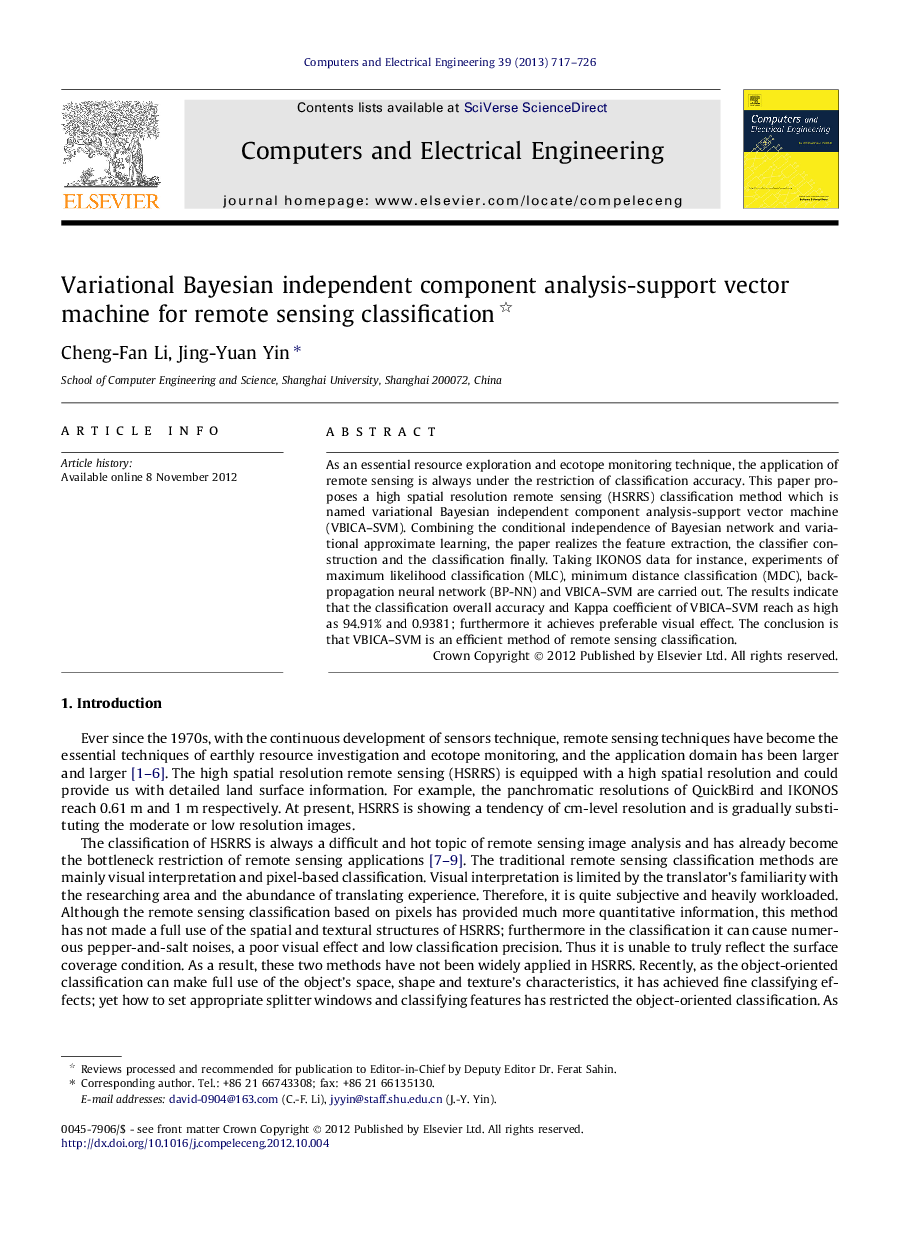| کد مقاله | کد نشریه | سال انتشار | مقاله انگلیسی | نسخه تمام متن |
|---|---|---|---|---|
| 455750 | 695545 | 2013 | 10 صفحه PDF | دانلود رایگان |

As an essential resource exploration and ecotope monitoring technique, the application of remote sensing is always under the restriction of classification accuracy. This paper proposes a high spatial resolution remote sensing (HSRRS) classification method which is named variational Bayesian independent component analysis-support vector machine (VBICA–SVM). Combining the conditional independence of Bayesian network and variational approximate learning, the paper realizes the feature extraction, the classifier construction and the classification finally. Taking IKONOS data for instance, experiments of maximum likelihood classification (MLC), minimum distance classification (MDC), back-propagation neural network (BP-NN) and VBICA–SVM are carried out. The results indicate that the classification overall accuracy and Kappa coefficient of VBICA–SVM reach as high as 94.91% and 0.9381; furthermore it achieves preferable visual effect. The conclusion is that VBICA–SVM is an efficient method of remote sensing classification.
Figure optionsDownload as PowerPoint slideHighlights
► A novel VBICA–SVM for high spatial resolution remote sensing images is proposed.
► Bayesian network and variational approximate algorithm are introduced into ICA model.
► An SVM classifier is constructed according to the VBICA and other input vectors.
► Advantages: novelty, efficiency, high accuracy, good image quality.
Journal: Computers & Electrical Engineering - Volume 39, Issue 3, April 2013, Pages 717–726